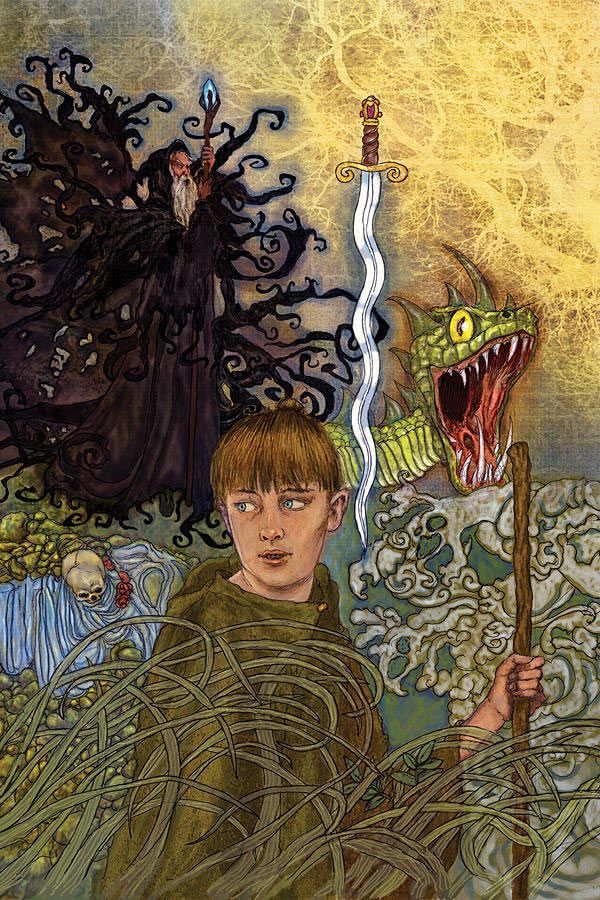Had J.R.R. Tolkien and Philip K. Dick sat down for a long chat before writing, one of them might've turned out something like "Eye of Newt." Hague presents the highest of high fantasy tropes in trippy layouts with kaleidoscopic '70s colors, creating a complex and super-cool genre mix-up. The aesthetic adds to the story and sells the youthful perspective of its protagonist, Newt, while also being just plain pretty. It's therefore unfortunate that this art is paired with such simplistic dialogue. The first issue shows promise as a concept -- if only it can get its dialogue straight.
The wizard and his apprentice are well-established fantasy archetypes, and there's an expected rhythm to their relationship that affords Hague some leeway. The wizard is wise and cryptic, Newt is wide-eyed and good, and it's expected enough that I don't require much nuance. That said, there is little done to build either character, and it eventually wears. Perhaps this is part of the point; many protagonists in surreal books are not deeply or complexly drawn. They're responding to the action, not driving it. Their evolution is not the point of the story.
However, the dialogue is so obvious and exposition-heavy that the lack of characterization doesn't feel intentional. Some exposition is expected and encouraged in a fantasy comic, but in future issues Hague should couch it in character development or nuance. In Issue #1, it is distractingly straightforward. Admittedly, it has set up nicely for Issue #2. The plot that's been outlined has enough layers and angles to continue at length, and Hague may have given Issue #1 most of the heavy lifting in order to pave a clearer path for the coming story. Though I appreciate what Issue #1 has set up, I do wish it could accomplish it with some more artistry.
Newt is the exception to this rule. His youth is vividly drawn, from the way he imagines being a dragon to his surprise when adults don't behave with integrity. The book feels surprisingly close to Newt, considering if isn't written in first person. His innocence may not feel unique or specific to him, but it does feel real.
My issues with the dialogue aside, the aesthetic here is unique, engaging and beautiful to look at. I love the suggestion that experiencing magic can feel like a drug trip, and that experiencing magic as a child could be even more confusing and wondrous. It's also crucial to the story. I believe Newt's youth and innocence because the art shows it. He seems to be experiencing this world without understanding it, only grasping the larger concepts when they are directly explained to him.
In sum, "Eye of Newt" #1 begins an interesting experiment that could flesh out into a great series. This is a first issue, so the focus on exposition could evaporate by Issue #2 -- and the fascinating aesthetic isn't going away. "Eye of Newt" may be worth another look, but it will need to correct the problems from Issue #1.

